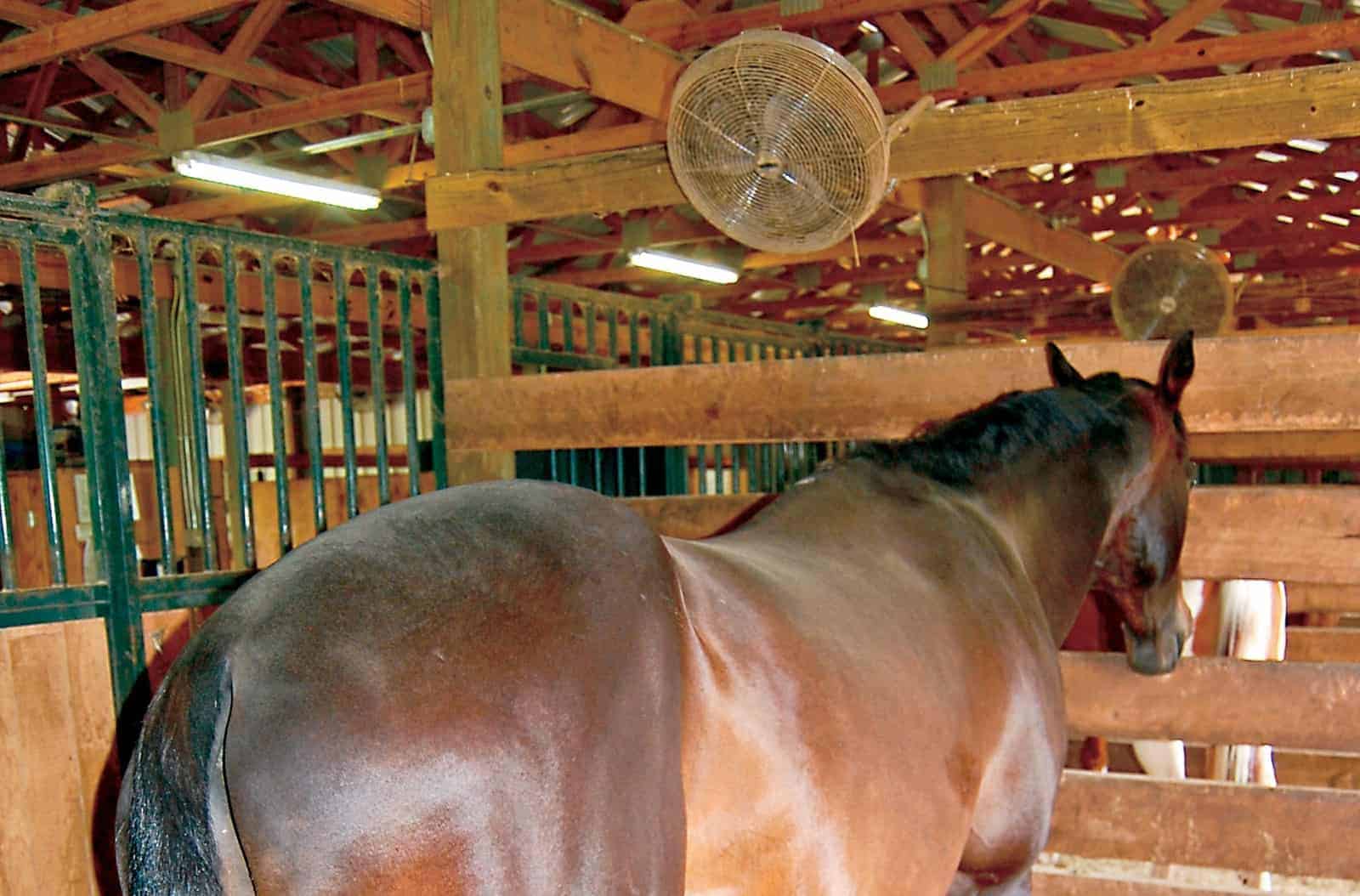Understanding Anhidrosis
- Topics: Anhidrosis, Article, Heat Stress, Summer Care, Water & Electrolytes

Anhidrosis is widespread in the hot and humid regions of the southeastern United States and the Gulf states, but it is also widely reported elsewhere during the summer and particularly during heat waves. Studies have revealed no age, sex, breed, or color predisposition. Both “native” and imported horses can be affected. Horses gain no protective effect from being born into hot climates where anhidrosis is common.
The condition’s onset can be gradual or acute. Increased respiratory rate and failure to cool after exercise are the most common initial findings. In situations that should cause copious sweating, affected animals produce minimal sweat—perhaps just under a saddle pad—when all other horses are completely lathered. Severely affected horses might not even be able to tolerate turnout on hot days; they will stand outside in distress with an extremely high respiratory rate and body temperatures higher than 104°F.
Many horses with chronic anhidrosis develop dry, flaky skin, lose hair (especially on the forehead), are fatigued, have a poor appetite, and do not consume as much water as usual. Some body areas can continue to sweat, which might be confusing to the horse owner and veterinarian.
Veterinarians often diagnose anhidrosis presumptively, based on clinical signs and examination, and they can perform quantitative confirmatory testing if necessary. They do this by injecting various dilutions of the bronchodilator terbutaline intradermally to elicit local sweating. Then they use absorbent pads to collect the sweat for 30 minutes and compare the weight of sweat produced to that of normal animals.
Owners have many options for treating anhidrosis, but moving the horse to a cooler climate is the only known successful approach. This helps the horse manage high body temperatures immediately; many horses start sweating again once in a cooler environment. If relocation is not a realistic option, owners must manage affected horses carefully in hot weather to prevent high body temperatures.
Keep nonsweaters stalled or in a shaded paddock during the day. Provide access to fans, misters, or sprinklers to help keep them cool. Some horses will step into troughs or ponds in their pastures to cool off. They should have constant access to cool, clean drinking water. Adjunctive or preventive (before hot weather hits) feeding of electrolytes or salt mixtures (“Lite Salt”) might help the horse maintain appropriate electrolyte concentrations.
Many supplement manufacturers claim their products offer relief, but this is anecdotal at best, and no research supports efficacy. Owners use many other treatments with minimal scientific evidence, including dark beer, salts, vitamins/electrolytes, or thyroid hormones. Most of these are not dangerous, but they also do not appear to improve anhidrosis when evaluated critically. Researchers have studied acupuncture and herbal treatments using a blinded clinical trial; response was minimal and short-lasting. Veterinarians have tried various medical treatments, including adrenocorticotropin hormone, α-2 agonists, prostaglandins, antihistamines, and Methyldopa (used to treat high blood pressure in humans), which have been generally unsuccessful. Administering unnecessary medications also puts the horse at risk for developing harmful side effects.
Ultimately, additional work is needed to identify the condition’s cause and develop useful treatments (and test existing ones). Research is ongoing in this area and supports that a signaling mechanism at the sweat glands’ level causes the acute disorder. Investigators have noted additional irreversible changes to the sweat glands in chronically anhidrotic horses. In the future, we can hope to apply this research to better treating our clinical cases of anhidrosis.
Written by:
Martha Mallicote, DVM, Dipl. ACVIM
Related Articles
Stay on top of the most recent Horse Health news with












